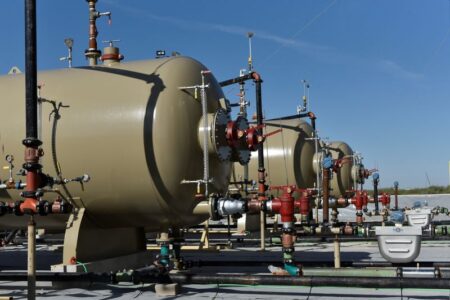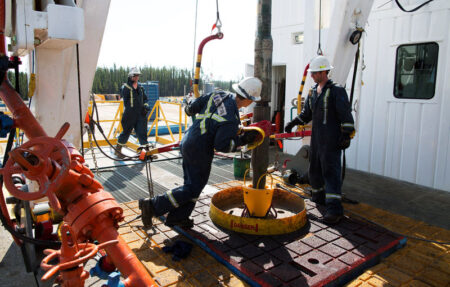By Scott DiSavino
(Reuters) – Water supplies in 2023 at The Dalles Dam on the Columbia River between Washington and Oregon fell to the lowest since 2001, but were expected to rise to near-normal levels in 2024, according to the latest federal data and forecasts.
More than one-third of U.S. hydropower capacity is located in the Pacific Northwest, which produces about half of the nation’s total hydropower, according to federal energy data.
The drop in water supplies reduces the amount of electricity available for export to other states and can boost power prices, like the record highs seen in 2023, by forcing energy firms to burn more expensive to produce energy.
During the 2023 water year, from Oct. 1, 2022-Sept. 30, 2023, the amount of water flowing through The Dalles was about 76% of the 30-year (1991-2020) normal, according to the U.S. Northwest River Forecast Center (NWRFC).
NWRFC forecast water flowing through The Dalles would be around 96% of normal during the 2024 water year.
In rankings of water years from 1949-2024, NWRFC said 2023 ranked 70th out of 76, while 2024 was on track to rank 47th.
The year with the most water was 1997 (Number 1) at 147% of normal, while the lowest was 1977 (Number 76) at just 59% of normal.
Lack of water in 2023 cut the amount of hydropower produced in the Pacific Northwest to just 71% of total power generation in the Bonneville Power Administration (BPA) region.
That compares with 76% in 2022 and a five-year (2019-2023) average of 74%. Water supplies were 103% of normal in 2022.
BPA, which is part of the U.S. Department of Energy, markets power generated at federal dams, among other things.
MORE GAS, MORE EXPENSIVE POWER
The hydropower reduction in 2023 forced energy firms to burn more gas to generate power. About 8% of the power generated in the BPA area in the 2023 water year came from gas, up from 6% in 2022 and a five-year average of 7%.
The extra cost of buying and burning that gas helped boost power costs at the Pacific Northwest Mic-Columbia Hub to a record high during the 2023 water year.
Mid-C prices averaged around $99 per megawatt hour (MWh) during the 2023 water year, up from $74 in 2022 and a five-year average of $58, according to data from financial firm LSEG and the federal government going back to 2010.
With 2024 expected to be a near-normal water year, Mid C prices will likely drop to around $79 per MWh, according to a federal price outlook.
Read the full article here












